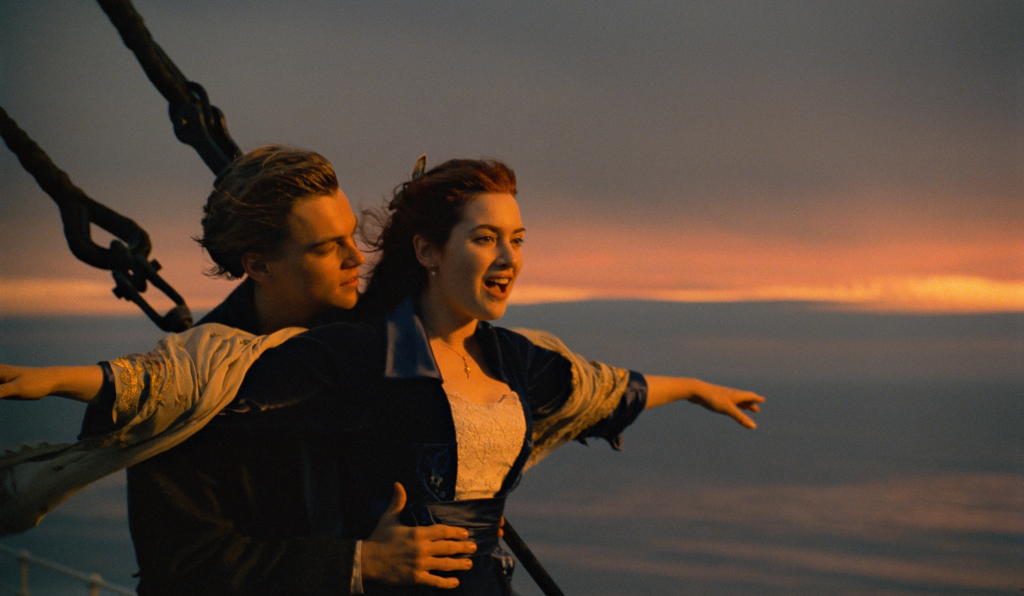“Titanic” is the rare film in which just one viewing can last for a lifetime, for better or worse. As the 25th anniversary of this juggernaut approaches, it is the perfect time to look back at its legacy and see how it holds up to modern cinematic standards. Lovers of the film appreciate its beautiful set design, depiction of true love and a great score, while its critics deride the lavish production and overindulgent runtime of over three hours.
“Titanic” was released in theaters on Dec. 19, 1997, and would go on to become the first film to gross a billion dollars at the worldwide box office. Beyond its commercial success, “Titanic” is also tied for the most nominations and wins for any film at the Academy Awards with 14 and 11, respectively — including wins for Best Picture and Best Director for James Cameron.
However, recently, critics of the film have come out of the woodwork to try and tear down the legacy of success “Titanic” once held. This raises the ever-important question — does “Titanic” swim like Rose DeWitt Bukater to safety or sink as the ill-fated ship did in real life? In order to fairly evaluate the film, let’s take a look at five important categories and see how “Titanic” holds up.
1. Characters: swim
Although the majority of the people on the Titanic died, the characters are a strong point of the film and hold up to the test of time. The two leads are Kate Winslet as DeWitt Bukater, an upper-class woman who is engaged to a man she does not love, and Leonardo DiCaprio as Jack Dawson, a poor artist. The two quickly fall in love despite their differences and the tension between them carries the film forward. The chemistry between Winslet and DiCaprio is palpable, and the two make for an endearing couple. Their dynamic holds the film together, but the supporting characters also shine, especially Gloria Stuart as an elder DeWitt Bukater and Billy Zane as her unlikable fiancée Cal Hockley.
2. Storyline: sink
Unlike the characters, the plot of “Titanic” does not hold up and it is not surprising that none of the film’s 14 Academy Award nominations came for writing. The story of the film is simple — two people who cannot be together because of societal norms end up falling in love with each other, with the tragedy of the Titanic mixed in. While simplicity is not necessarily a bad thing, what holds back the story is how long and drawn out it is for no reason. There is at least an hour of content from “Titanic” that could be cut from the film without losing any of the character development or story, which is bad because these scenes lose the audience’s attention and make the film painful at points to watch.
3. Production Design: swim
The production design is absolutely stunning and “Titanic” won Best Visual Effects, Best Sound Effects Editing, Best Art Direction and Best Costume Design at the Academy Awards for good reason. Even 25 years later, the visual of the R.M.S. Titanic on screen is engaging and believable, thanks in large part to the lavish sets and to-scale recreation of the Titanic done for the film. The interior sets, exterior shots of the Titanic and underwater shots of the wreckage all look great and hold up against the visual effects of modern cinema, yet are more impressive due to the technological limitations of the era the film was made in.
4. Themes: sink
Similarly to the storyline, the themes of “Titanic” do not hold up for modern audiences. While in 1997 it was still acceptable to tell a tale solely about true love, it feels forced and contrived in the modern era. Watching two people fall in love in an instant and spend the next two hours running around a sinking ship does not have the same charm that it once had. The lackadaisical approach of Rose and Jack toward survival when their lives are on the line is frustrating to watch. Hollywood has proven that it can make great films about social class differences such as “District 9” and “Blue Jasmine,” but “Titanic” does not have enough to say about the issue.
5. Score: swim
Coming into the final category, the score had the opportunity to make or break “Titanic” and it made the film with resounding success. Composer James Horner won two Academy Awards for his work on “Titanic” — Best Original Dramatic Score and Best Original Song for “My Heart Will Go On.” Horner’s score is iconic and the melodies from it are instantly recognizable, capturing the wonder and love at the heart of the sea. Likewise, Celine Dion’s performance of “My Heart Will Go On” has managed to stay culturally relevant for the last 25 years and will always be near to the heart of the audience, wherever they are.
Overall, “Titanic” holds up to the test of time, although just barely. The rich characters, elegant production design and impactful score keep the film afloat enough for it still to be considered a classic of late 20th-century Hollywood. However, even fans of the film must recognize that it has not aged perfectly and there are aspects of “Titanic” that are disappointing.



